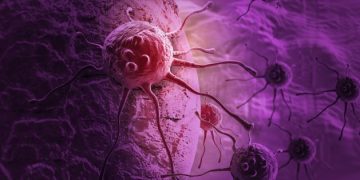The term cerebrovascular disease describes a wide range of conditions that affect the blood vessels that supply oxygen to the brain. When these blood vessels narrow or block (stenosis), clot, or rupture (hemorrhage), brain tissue is not being properly oxygenated and can begin to die. Fortunately, the majority of these conditions can be treated by specialists in neurosurgery and vascular surgery using minimally invasive techniques.
The acquired causes of cerebrovascular disease can include age-related atherosclerosis, a buildup of plaque within the arteries that carry oxygen to the brain; cerebrovascular aneurysms; ischemic stroke; and subarachnoid hemorrhage. These conditions can be prevented with key lifestyle changes and medications including diet, exercise, tobacco cessation, anti-hypertensive medication, and medications to control cholesterol and blood pressure.
Certain congenital conditions present from birth can also lead to cerebrovascular incidents including CADASIL (cerebral autosomal dominant arteriopathy with subcortical infarcts and leukoencephalopathy) caused by mutations of the Notch3 gene on chromosome 19, germinal matrix hemorrhages in premature infants, who are unable to autoregulate their cerebral blood flow; and arteriovenous malformations. These conditions can also be prevented by genetic counseling and appropriate management of risk factors including age, high cholesterol, smoking, hypertension, and diabetes.

Symptoms of cerebrovascular disease are related to the area of the brain affected and can vary widely depending on the condition. In general, they involve cognitive impairment and physical disability with some affecting the face causing drooping (“facial palsy”), balance, speech, and movement. The severity of the symptoms is related to how pronounced and widespread the ischemia or infarction is.
Some people have several “silent” areas of ischemia in the brain that don’t produce any noticeable symptoms until a critical threshold is reached when the compensatory ability of the brain is overwhelmed and they experience a full stroke. A person’s risk for a stroke is increased by multiple silent areas of ischemia and their symptoms can be identified with brain imaging studies including CT or MRI.
Surgical treatment of cerebrovascular disease can be performed through different approaches depending on the condition, including open surgery, angioplasty and stenting (to treat arterial stenosis), or endarterectomy to remove the clot or damaged wall of an aneurysm. For those with an aneurysm that is not at a high risk for rupturing, careful monitoring may be recommended until the patient is older to decrease their chances of having a catastrophic hemorrhage. For those with a high risk of an aneurysm rupture or other vascular malformation, our team can perform minimally invasive procedures called neurointerventional treatments. This involves threading a catheter into the blood vessel and infusing a dye that helps to locate the aneurysm, stenosis or malformation on an X-ray. A balloon is then inflated to open the narrowed artery and then a stent is placed to prevent future clots from forming.









